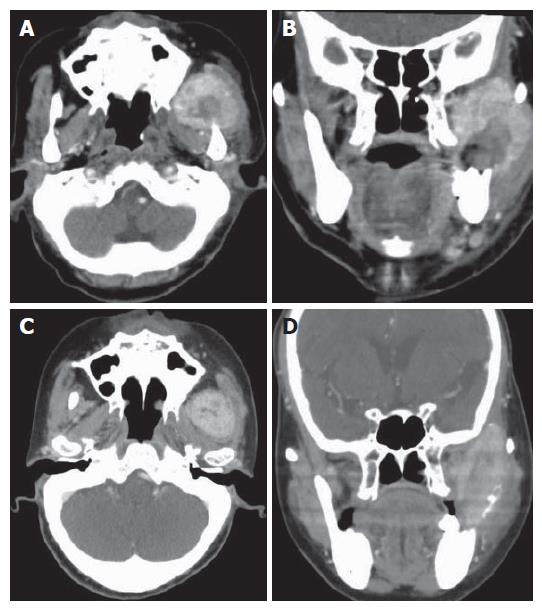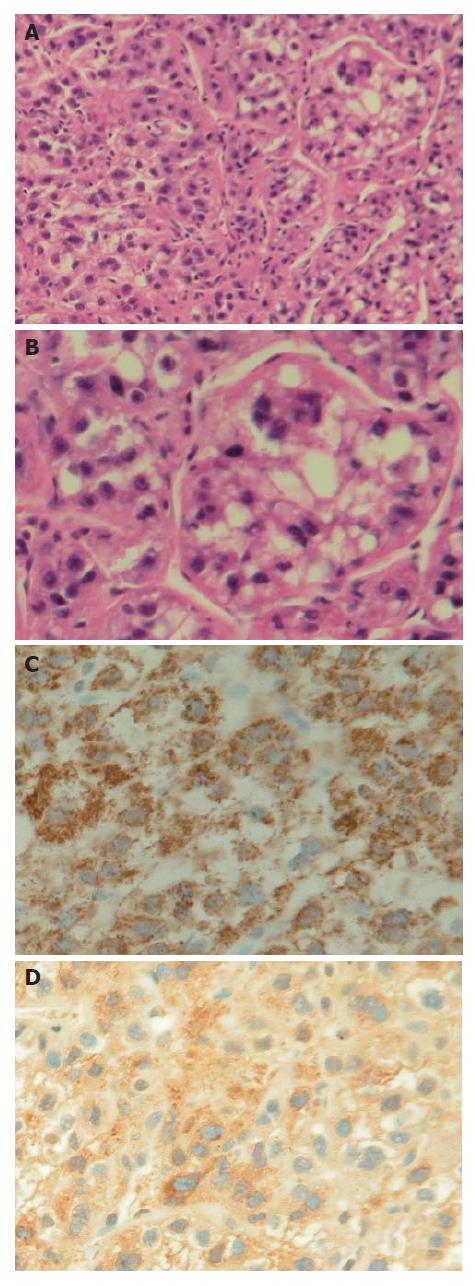Copyright
©2007 Baishideng Publishing Group Co.
World J Gastroenterol. Sep 7, 2007; 13(33): 4526-4528
Published online Sep 7, 2007. doi: 10.3748/wjg.v13.i33.4526
Published online Sep 7, 2007. doi: 10.3748/wjg.v13.i33.4526
Figure 1 Axial and coronal CT scan of the neck with intravenous contrast showing a 6.
2 cm х 5.0 cm, heterogeneously enhancing mass, which appears to be a left parapharyngeal mass involving the pterygoid muscle and temporal muscle (A and B); axial and coronal CT scan of the head and neck showing a 4.0 cm х 2.5 cm mass which shrunk after completion of radiotherapy (C and D).
Figure 2 Histopathology of the metastatic lesion.
A: The tumor is composed of polygonal cells featuring abundant clear to eosinophilic cytoplasm and microvesicular fatty change, and the tumor cells are arranged in broad trabeculae surrounded by sinusoid spaces which are characteristic of hepatocellular carcinoma (HE, х 100); B: Histology of the metastatic tumor (HE, x 200); C: The tumor cells showing immunoreactivity to Hep Par-1 with a cytoplasmic granular staining pattern (х 200); D: The tumor cells showing focal immunoreactivity to AFP (х 200).
- Citation: Huang SF, Wu RC, Chang JTC, Chan SC, Liao CT, Chen IH, Yeh CN. Intractable bleeding from solitary mandibular metastasis of hepatocellular carcinoma. World J Gastroenterol 2007; 13(33): 4526-4528
- URL: https://www.wjgnet.com/1007-9327/full/v13/i33/4526.htm
- DOI: https://dx.doi.org/10.3748/wjg.v13.i33.4526










